1.08.2021
 The Arianespace commercial launcher family was expanded in 2012 with the addition of Vega, a new-generation vehicle for flights with small- to medium-sized satellite payloads. This four-stage launcher – a European Space Agency (ESA) program – is tailored to carry the growing number of small scientific spacecraft and other lighter-weight payloads under development or planned worldwide. Its target payload lift capability is 1,500 kg. on missions to a 700-km. circular orbit. To meet the bourgeoning small satellite market for institutional and commercial needs, Arianespace offers shared payload opportunities on Vega with the Small Spacecraft Mission Service (SSMS). This concept – involving multiple small satellites from 1 kg. to 500 kg. being flown together with the objective of sharing the launch cost – was developed with the support of ESA and Vega prime contractor Avio. The satellite dispenser is an ESA product developed by Avio under ESA leadership, and it is produced by the Czech company, SAB Aerospace s.r.o. Satellite integration can be performed for the first time in Europe (at the Czech Republic).
The Arianespace commercial launcher family was expanded in 2012 with the addition of Vega, a new-generation vehicle for flights with small- to medium-sized satellite payloads. This four-stage launcher – a European Space Agency (ESA) program – is tailored to carry the growing number of small scientific spacecraft and other lighter-weight payloads under development or planned worldwide. Its target payload lift capability is 1,500 kg. on missions to a 700-km. circular orbit. To meet the bourgeoning small satellite market for institutional and commercial needs, Arianespace offers shared payload opportunities on Vega with the Small Spacecraft Mission Service (SSMS). This concept – involving multiple small satellites from 1 kg. to 500 kg. being flown together with the objective of sharing the launch cost – was developed with the support of ESA and Vega prime contractor Avio. The satellite dispenser is an ESA product developed by Avio under ESA leadership, and it is produced by the Czech company, SAB Aerospace s.r.o. Satellite integration can be performed for the first time in Europe (at the Czech Republic).
+++
Update: 11.08.2021
.
Next Vega mission to orbit Pleiades Neo 4 EO bird and 4 small science sats
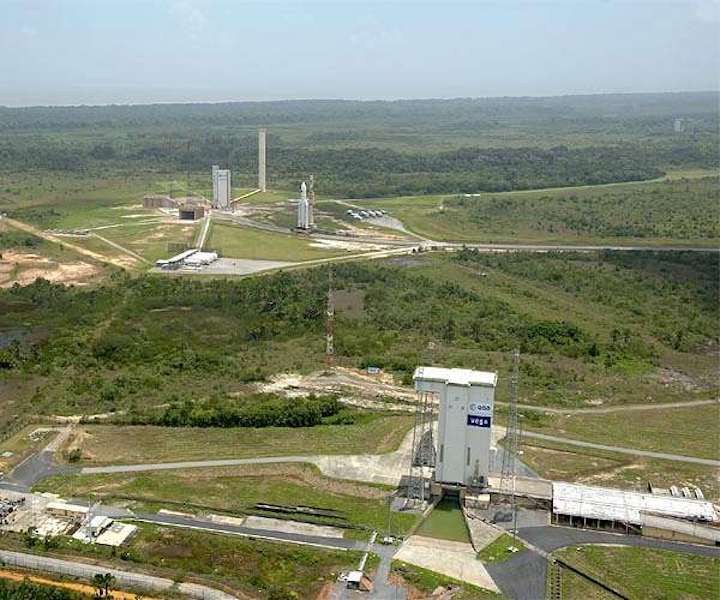
On Monday, August 16, 2021 at 10:47 pm local time (01:47 am (UTC) on Tuesday, August 17), Arianespace's second Vega mission of the year will lift off from Europe's Spaceport in French Guiana, with the optical observation satellite Pleiades Neo 4 and four auxiliary passengers.
After liftoff from Europe's Spaceport, the Vega launcher will fly for a little over six minutes, powered by the first three stages. The third stage will then separate from the upper composite, which comprises the AVUM upper stage, the Pleiades Neo 4 satellite and its four auxiliary passengers. The AVUM stage will ignite its engine for the first time, in a powered phase lasting about eight minutes, followed by a ballistic phase lasting over 37 minutes.
The AVUM stage will then restart its engine for a second burn lasting a little minute, before releasing the Pleiades Neo 4 satellite at an altitude of 625 km. The next two AVUM ignition phases will last 14 and 13 seconds interrupted by a 41 minutes lasting ballistic phase, followed by the release of the four auxiliary payloads. That will mark the end of mission VV19, one hour and 44 minutes and 59 seconds after liftoff.
Pleiades Neo 4, fully funded and manufactured by its operator Airbus, is the second out of four satellites of Pleiades Neo constellation, the first one having been successfully orbited by Vega Flight 18 on April 28, 2021. With 30cm-native-resolution, best-in-class geolocation accuracy and twice-a-day revisit, the four Pleiades Neo satellites unlock new possibilities with ultimate reactivity. Thanks to these state-of-the-art satellites, each step of the acquisition and delivery cycle offers top-level Earth observation services now and going forward for the next ten years.
The 19th mission of Europe's Vega light launcher will also orbit three cubesats for the European Space Agency (ESA):
LEDSAT, an educational project from the University of Sapienza participating in ESA's Fly Your Satellite! program, that has been conceived to investigate the performances of a technology based on Light Emitting Diodes for the optical stand-alone Low-Earth Orbit satellites tracking;
RADCUBE, a CubeSat developed with an international consortium to demonstrate miniaturized instrument technologies that measure in-situ the space radiation and magnetic field environment in Low Earth Orbit for space weather monitoring purposes;
SUNSTORM, a cubesat with an innovative solar X-ray spectrometer to detect the X-ray pulses produced by coronal mass ejections - massive eruptions of many millions of tons of material from the Sun's surface.
The last satellite onboard Flight VV19 will be BRO-4, a CubeSat developed by the French start-up Unseenlabs. The spacecraft is part of the constellation BRO (Breizh Reconnaissance Orbiter), a spectrum monitoring and electromagnetic intelligence service for maritime surveillance. The auxiliary payloads are under contract of SAB Launch Services.
Quelle: SD
----
Update: 16.08.2021
.
Vega VV19 Mission (16.08.2021)
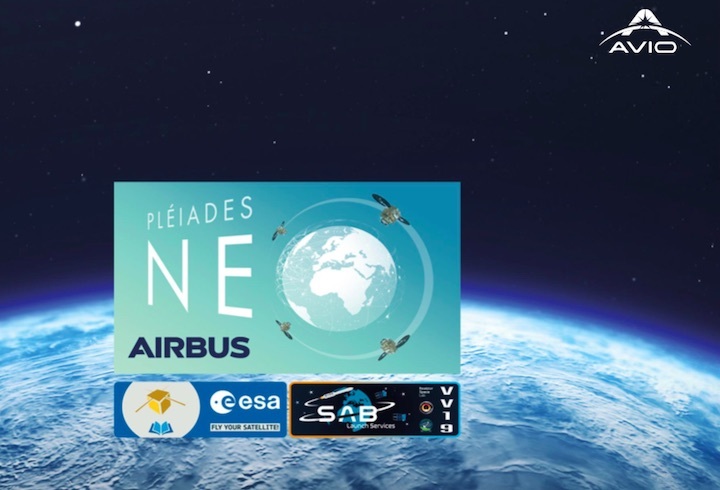
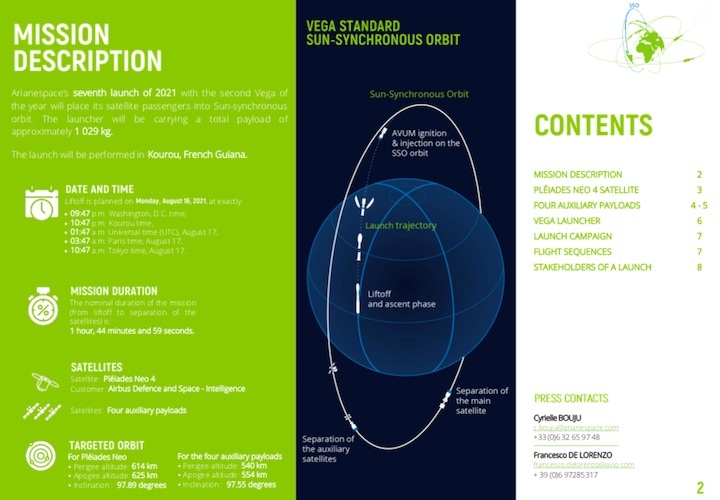
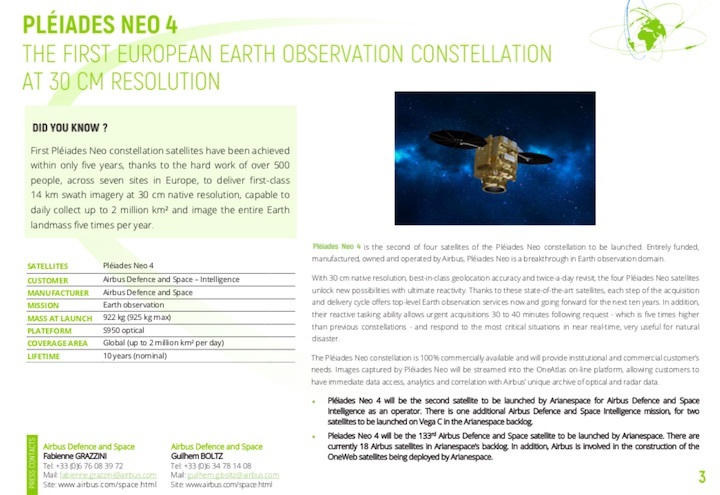
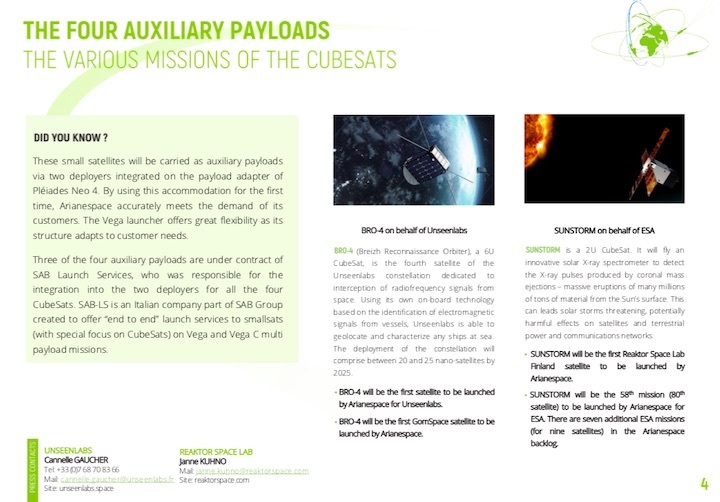
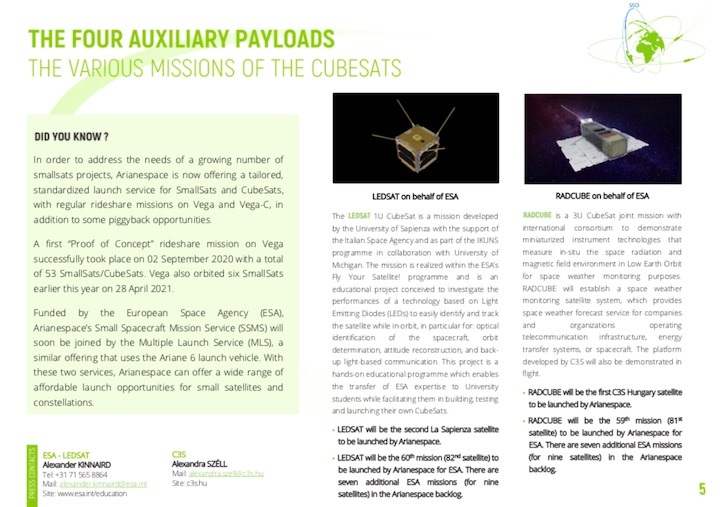
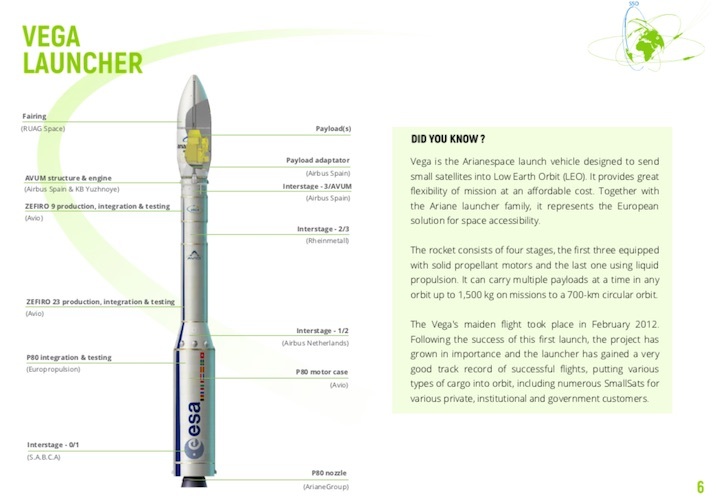
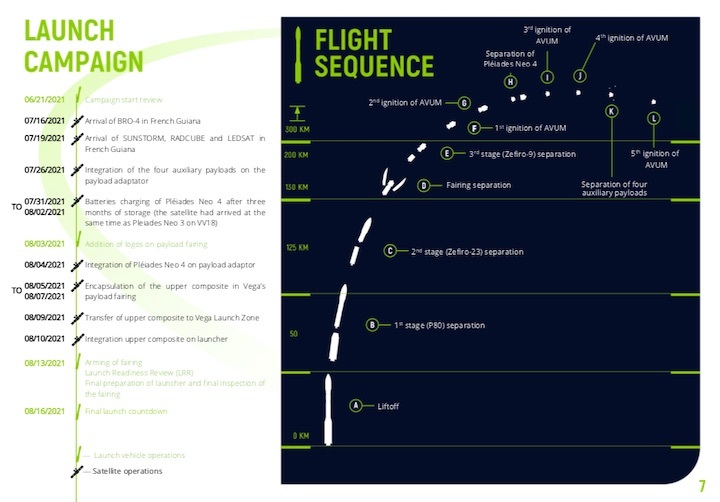
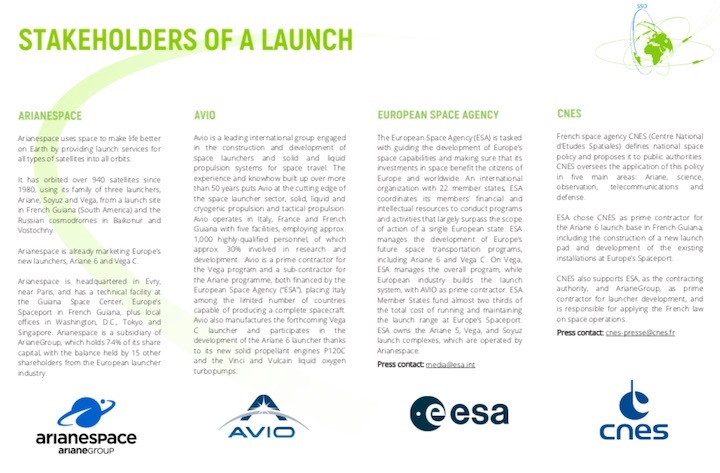
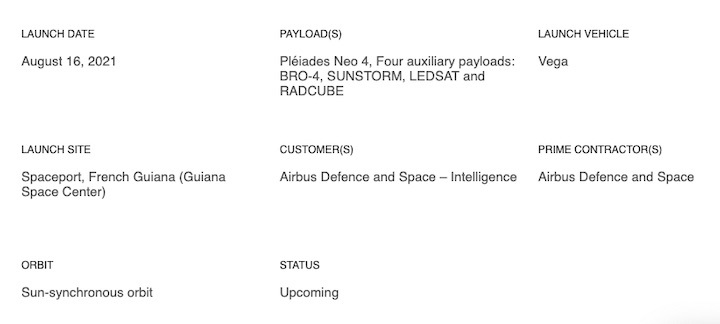
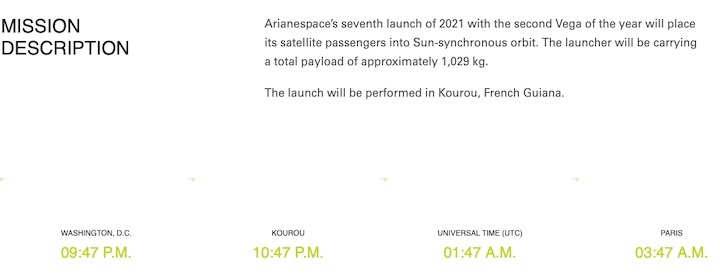
Quelle: arianespace
----
Update: 17.08.2021
.

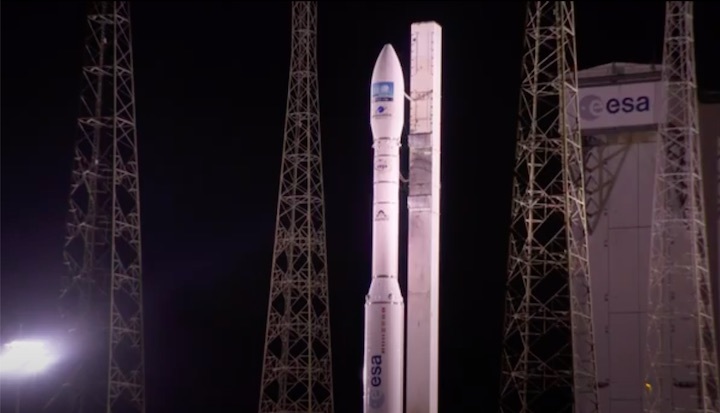
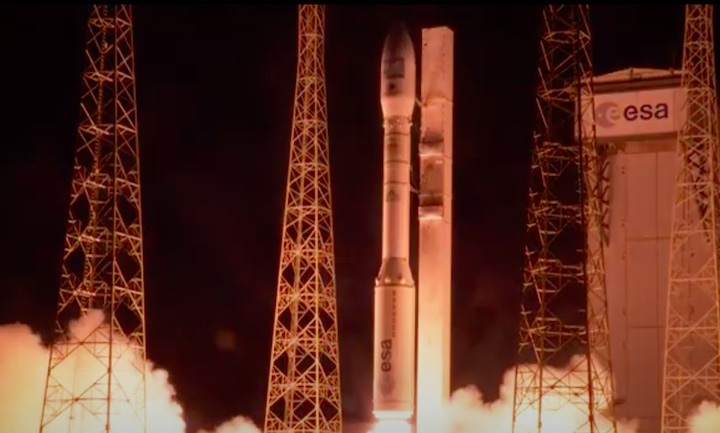
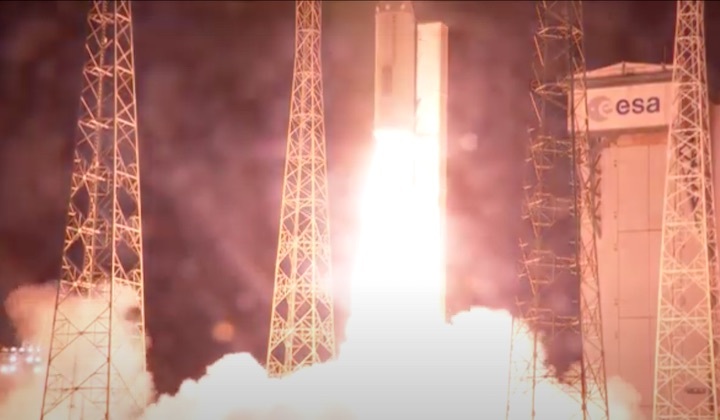
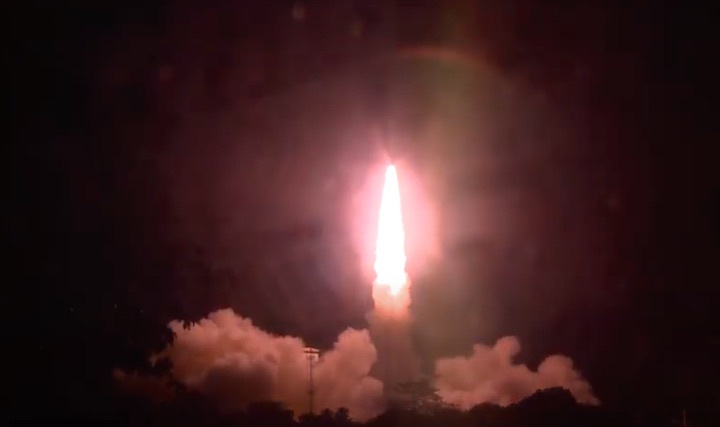
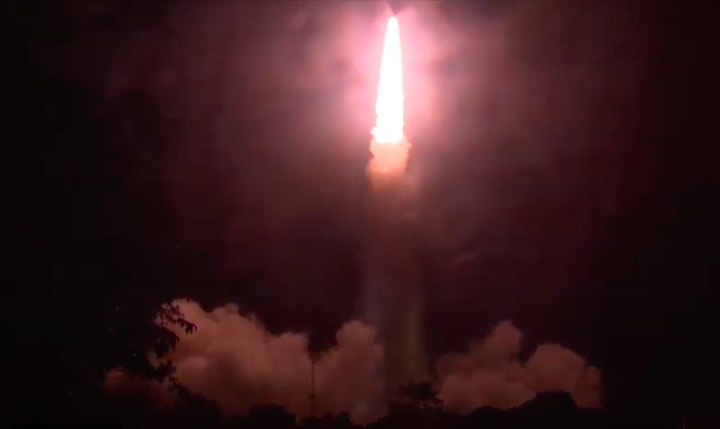
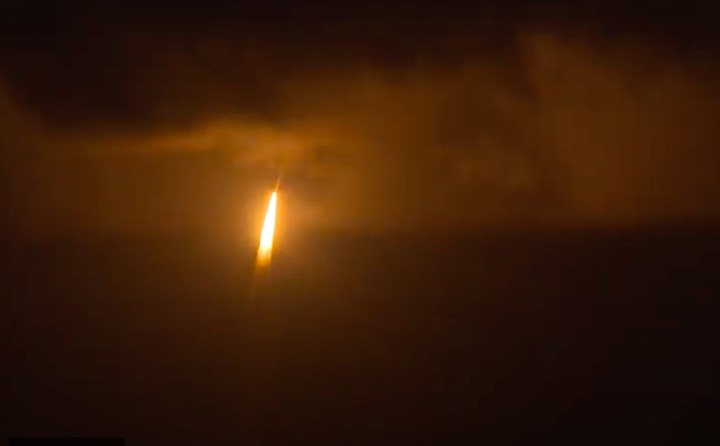
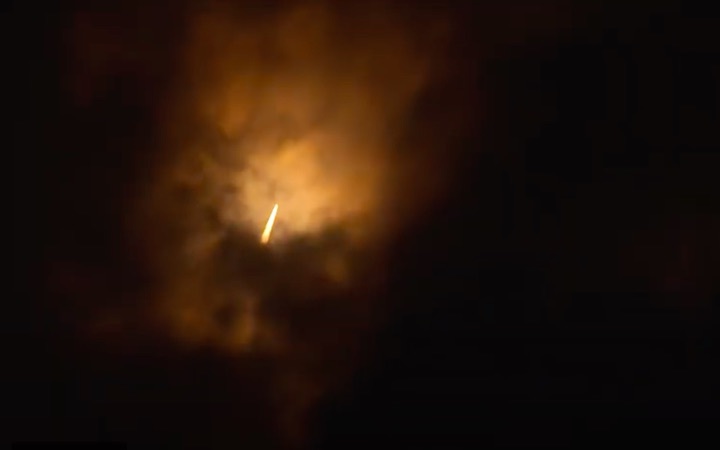
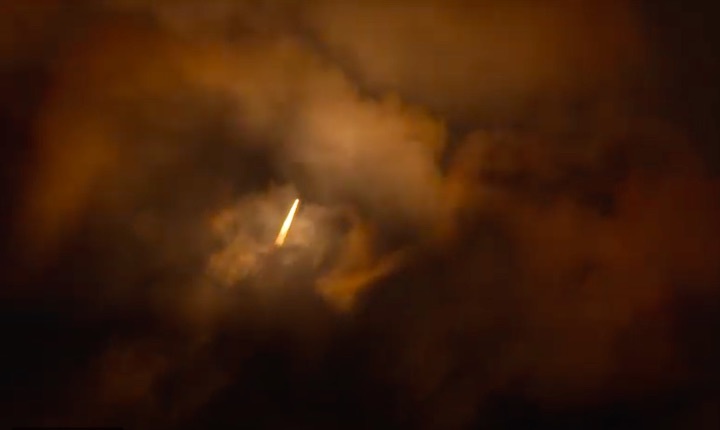
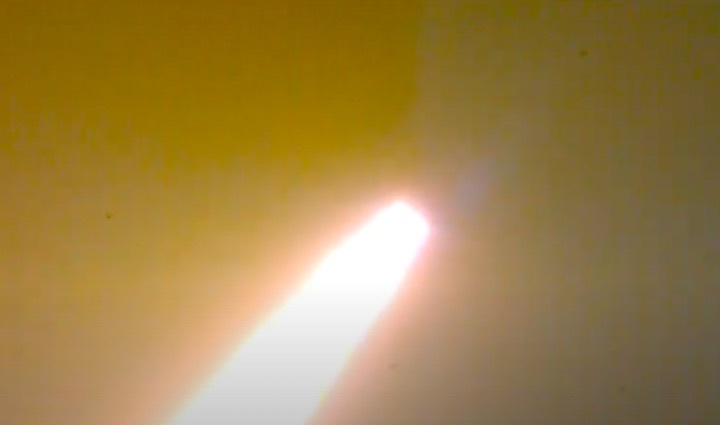
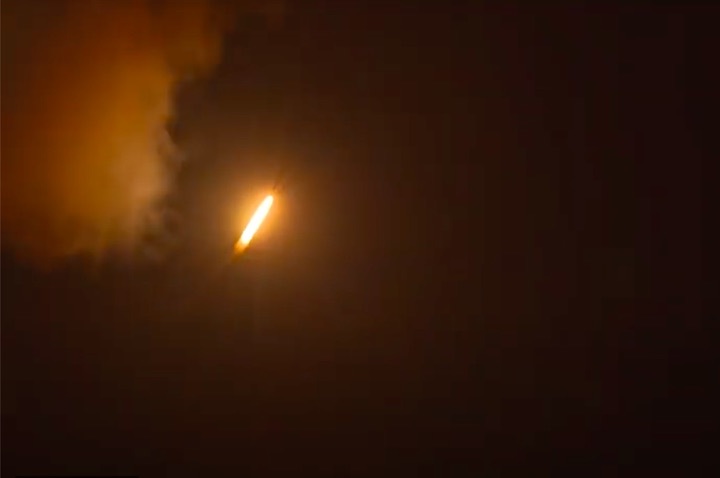
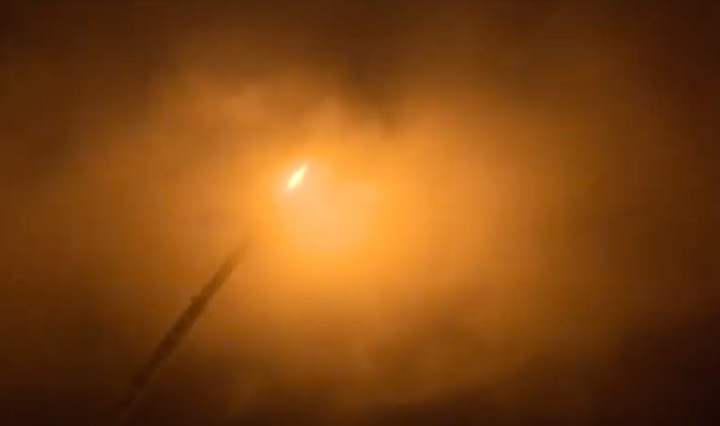
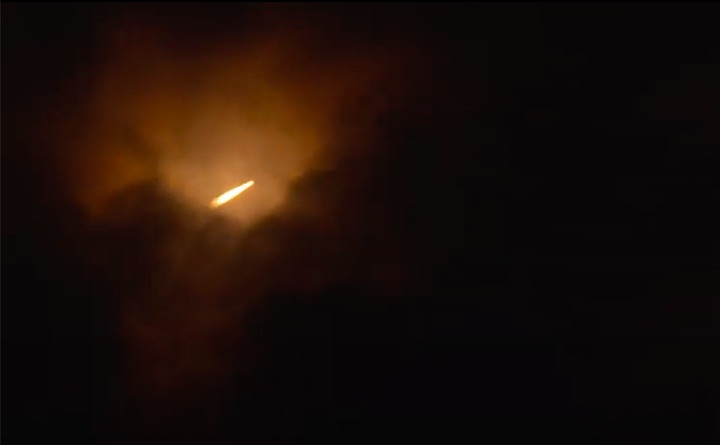
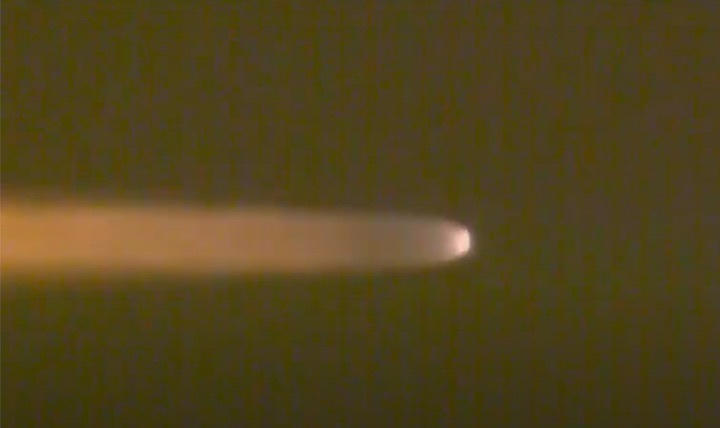
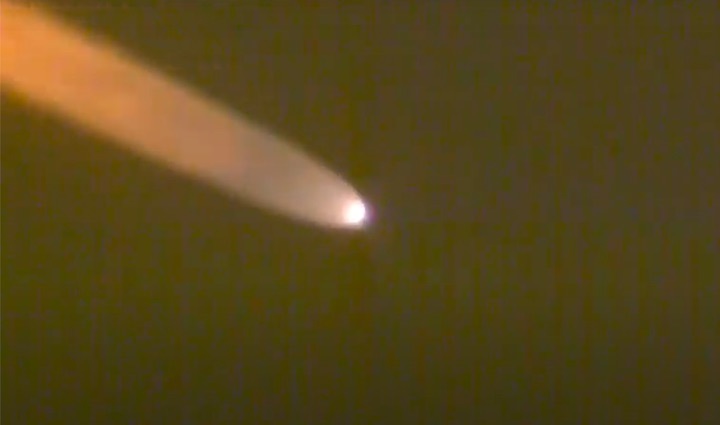
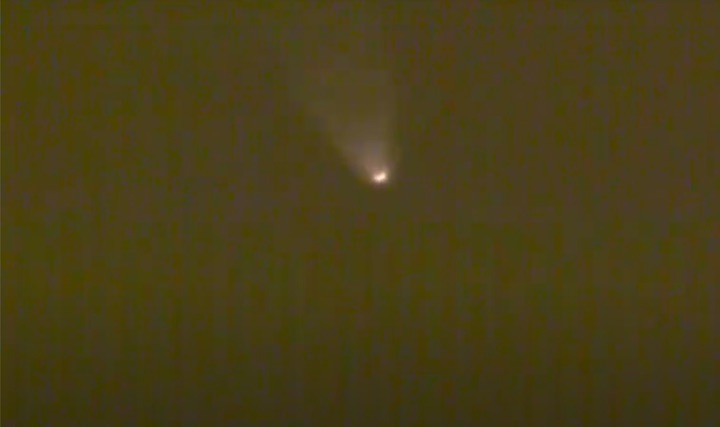
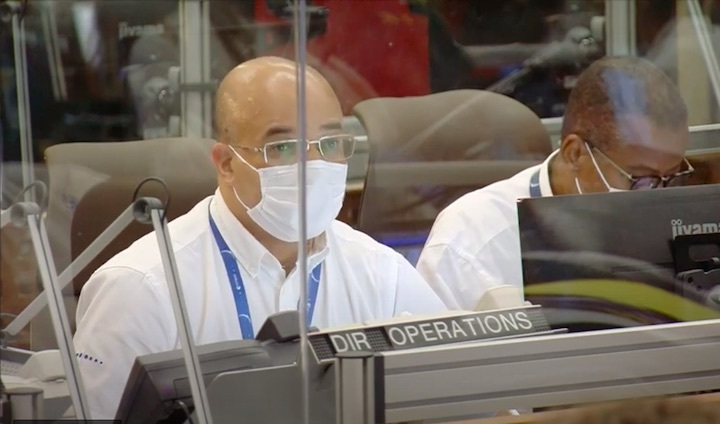
Quelle: arianespace
+++
19th Vega mission demonstrates Arianespace’s ability to deliver for the most innovative projects for the benefits of its clients

- On August 16, Arianespace launched the 19th Vega mission (VV19), its 7th successful launch of the year.
– This launch orbited Pléiades Neo 4, the second very high-resolution satellite of the new Airbus Defence and Space’s Earth Observation satellite constellation.
– Four innovative cubesats were also deployed for ESA and Unseenlabs.
On Monday, August 16, 2021 at 10:47 pm local time (01:47 am (UTC) on Thursday, August 17), a Vega launch vehicle operated by Arianespace lifted off successfully from Europe’s Spaceport in French Guiana (South America). This mission marked Arianespace’s 7th successful launch of the year and the second with Vega in 2021. It lasted one hour, 44 minutes and 59 seconds during which Pléiades Neo 4 separated on a sun-synchronous orbit at an altitude of 625 km while the four auxiliary payloads separated at 551 kilometers.
“I would like to congratulate all the teams involved in the success of this second Vega of 2021”, said Stéphane Israël, CEO of Arianespace. “With this mission, Arianespace demonstrates yet again the incredible versatility of Vega: we delivered safely into orbit the second satellite of the innovative Pleiades Neo 4 constellation on behalf of Airbus, alongside 4 auxiliary CubeSats for ESA and the French start-up Unseenlabs. More than ever, Vega is a key pillar of an autonomous access to space for Europe, allowing the expansion of benefits from space to earth.”
Today’s mission’s primary purpose was orbiting Pléiades Neo 4, the second of the four satellites of the Pléiades Neo constellation, the first being launched with Vega on April 28, 2021. With 30cm-native-resolution, best-in-class geolocation accuracy and twice-a-day revisit capability, the four Pléiades Neo satellites unlock new possibilities with the ultimate in reactivity. The satellite was fully funded and manufactured by its operator Airbus.
Pléiades Neo 4 was the 133rd Airbus Defence and Space satellite to be launched by Arianespace. There are currently 18 Airbus satellites in Arianespace’s backlog 11 of which will be launched with Vega and Vega C launchers. The last two satellites of the Pléiades Neo constellation will be placed into orbit in 2022 thanks to the next generation launch vehicle, Vega C.
The 19th mission of Europe’s Vega light launcher also injected four CubeSats on a sun-synchronous orbit, three for the European Space Agency (ESA) and one for the French start-up Unseenlabs:
- LEDSAT, an educational project from the University of Sapienza, Italy, participating in ESA’s Fly Your Satellite! program, that has been conceived to investigate the performances of a technology based on Light Emitting Diodes for optical Low-Earth Orbit satellites tracking;
- RADCUBE, a CubeSat from C3S, Hungary, to demonstrate miniaturized instrument technologies that measure in-situ the space radiation and magnetic field environment in Low Earth Orbit for space weather monitoring purposes;
- SUNSTORM, a CubeSat from RSL, Finland, with an innovative solar X-ray spectrometer to detect the X-ray pulses produced by coronal mass ejections – massive eruptions of many millions of tons of material from the Sun’s surface;
- BRO-4, fourth CubeSat from Unseenlabs, France, of the constellation BRO (Breizh Reconnaissance Orbiter), a spectrum monitoring and electromagnetic intelligence service for maritime surveillance.
The later three auxiliary payloads were under contract with SAB Launch Services. In order to meet their clients’ needs and to ensure them a quicker access to Space, Arianespace and SAB Launch Services set up a collaboration to integrate all four auxiliary passengers in two PSL6U Deployers installed on the Payload Adapter.
As demonstrated by this new mission, Vega is perfectly tailored to carry the growing number of commercial and governmental small spacecraft and other lighter-weight payloads. Because of its high performance and versatility, Vega provides the best possible launch solution for small and medium spacecraft headed into a wide range of orbits (Sun Synchronous Orbit, Low Earth Orbit, Transfer to the Lagrange point L1, etc.), for Earth observation, science, education, defense and other applications.
The Vega program is the result of the cooperation of 10 European countries. It has been developed under the leadership of ESA, with Italy (ASI) as the first contributor and Avio Spa (Colleferro, Italy) as a prime contractor, responsible for all industrial operations up-to lift-off from Europe’s Spaceport. Since its maiden flight in 2012, Vega has been a part of Arianespace’s family of launch vehicles.
Quelle: arianespace
+++
Vega launches Pléiades Neo and CubeSats
Europe’s Vega has delivered Pléiades Neo-4 and four auxiliary payloads, SunStorm, RadCube and LEDSAT developed through ESA, and BRO-4, to their planned orbits.
Liftoff of flight VV19 from Europe’s Spaceport in French Guiana came at 02:47 BST on 17 August (03:47 CEST; 22:47 local time on 16 August) for a mission lasting about 105 minutes.
Pléiades Neo-4, the primary payload with a launch mass of 922 kg, was the first to be released into a Sun-synchronous orbit about 55 minutes into the mission.
Then, following two burns interrupted by a ballistic phase lasting 41 minutes, Vega’s upper stage released four auxilliary payloads in a coordinated sequence.
To comply with debris regulations to help keep space clean, the upper stage burned a final time to deorbit itself to ensure direct reentry and burn up high in the atmosphere over the ocean.
Pléiades Neo-4 is an Earth observation satellite owned and operated by Airbus Defence and Space. It is the second of a constellation of four satellites to provide very high-resolution images of Earth’s surface several times per day to a 30 cm per-pixel resolution. This data will be used to monitor the effects of climate change, for mapping, in defence, and will offer near-real time emergency service response capabilities over the next 10 years. Pléiades Neo-4 joins Pléiades Neo-3 which was launched on Vega’s first launch this year.
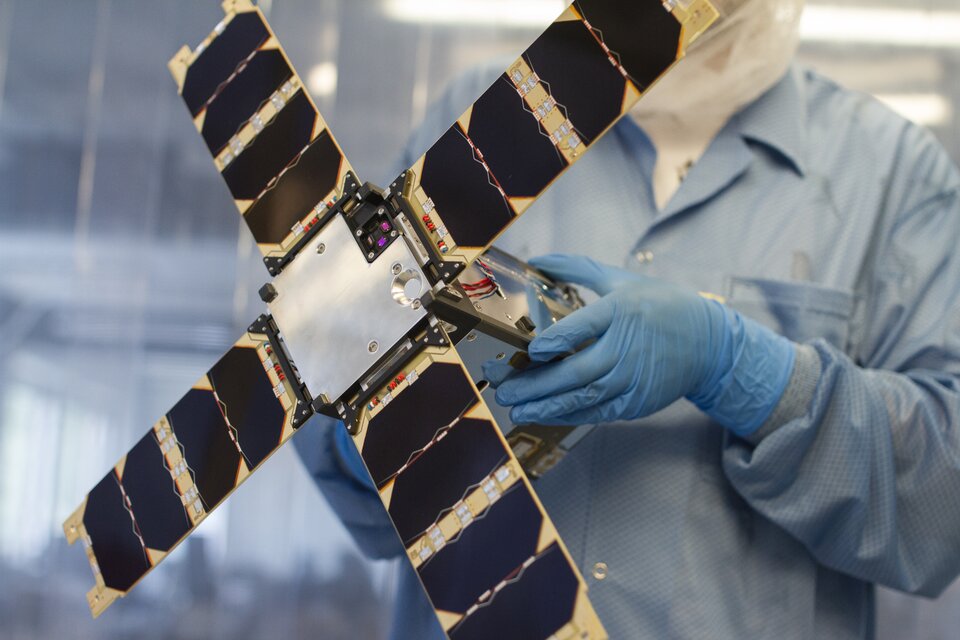
Sharing this launch were three CubeSats from ESA: SunStorm, RadCube and LEDSAT.
SunStorm and RadCube will demonstrate miniaturised space weather instruments for use in later operational space weather missions and have been developed through ESA’s General Support Technology Programme (GSTP).
SunStorm, a two-unit CubeSat built and operated by Reaktor Space Lab in Finland, hosts a new solar X-ray flux monitor which will detect coronal mass ejections from the Sun which threaten satellites and terrestrial power and communications networks. It demonstrates a novel ant-sized silicon drift detector, developed by Isaware in Finland, a technology planned to be used on the ESA Lagrange space weather mission.

RadCube is a three-unit CubeSat built through a collaboration led by C3S in Hungary. It will demonstrate a new CubeSat platform from C3S and a new space weather in-situ monitoring instrument called RagMag. The instrument consists of a radiation telescope developed by the Centre for Energy Research in Hungary, and a magnetometer developed by Imperial College London in UK, which is to be deployed on the end of a boom system developed by Astronika in Poland. It carries an experiment to show how radiation in space damages electronics, which will lead to safer components and spacecraft.

LEDSAT is a student project from La Sapienza, University of Rome, Italy, supported by the ESA Education Office via the Fly Your Satellite! programme. LEDSAT is covered with 140 Light Emitting Diodes (LED) which can light up when it is not illuminated by the Sun. This enables extended optical tracking of satellite position, attitude and velocity by ground-based telescopes, and will be used to perform preliminary tests on optical communications.
In addition, BRO-4 (Breizh Reconnaissance Orbiter) is one of a constellation of satellites developed by French startup company, UnSeenLabs. BRO-4, is a shoebox-sized spectrum monitoring and electromagnetic intelligence service for maritime and aerial traffic surveillance. A planned constellation by 2025 will comprise 20–25 nanosatellites.
Vega has been in operation since 2012 and is ideal for launching light satellites to multiple orbits in a single launch. It is a 3 m-diameter single-body vehicle comprising four stages. It stands 30 m tall with a liftoff mass of 137 tonnes. The total payload mass for this launch was about 1029 kg.
“We celebrate another Vega success while we gear up for the transition to the enhanced Vega-C version and prepare future evolutions of this launch system beyond 2025. We’re progressing on all these fronts in parallel. Vega is and will remain an essential element of European space transportation logistics,” commented Daniel Neuenschwander, ESA Director of Space Transportation.
Quelle: ESA

